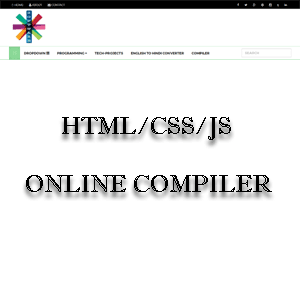How to improve the performance of Tomcat service configuration for slow networks.
Improving the performance of Tomcat services over a slow network involves addressing multiple aspects of
both Tomcat configuration and network conditions. Here are some strategies to consider:
Optimize Tomcat Configuration:
Increase Thread Pool Size: Ensure that your Tomcat’s connector thread pool is appropriately sized. You can adjust the `maxThreads` attribute in your `server.xml` file to handle more simultaneous requests.
Optimize Tomcat Configuration:
Increase Thread Pool Size: Ensure that your Tomcat’s connector thread pool is appropriately sized. You can adjust the `maxThreads` attribute in your `server.xml` file to handle more simultaneous requests.
<Connector
port="8080"
protocol="HTTP/1.1"
maxThreads="200"
connectionTimeout="20000"
redirectPort="8443" />
Connection Timeout Settings: Tune the `connectionTimeout` attribute to be reasonable, considering network conditions. Setting it too high might lead to resource wastage on the server.
Disable Unnecessary Connectors:
Disable any unused connectors (e.g., AJP or HTTP/2) if they are not needed to reduce the overhead.
Enable Keep-Alive:
Keep-alive allows a single TCP connection to remain open for multiple requests, reducing the overhead of opening new connections for each request.
<Connector
port="8080"
protocol="HTTP/1.1"
connectionTimeout="20000"
redirectPort="8443"
keepAliveTimeout="60000"
maxKeepAliveRequests="100" />
Configure Java’s garbage collection parameters to reduce the impact of GC pauses. Depending on your workload, you might use the G1GC collector or other JVM options suitable for your application.
-XX:+UseG1GC -XX:MaxGCPauseMillis=200
Reduce Latency: Ensure that your application code is optimized for performance. Slow database queries, inefficient algorithms, or heavy computation can exacerbate the effects of a slow network. Asynchronous Processing: Where possible, use asynchronous processing to free up Tomcat threads for other requests while waiting for I/O operations to complete.
Caching: Implement caching strategies (e.g., HTTP caching, application-level caching) to minimize the number of times the application needs to generate the same responses or fetch the same data.
Improve Network Performance:
Network Bandwidth: Ensure that your network has adequate bandwidth to handle the traffic. If possible, increase the bandwidth or use a Content Delivery Network (CDN) to reduce the load on your server.
Improve Network Performance:
Network Bandwidth: Ensure that your network has adequate bandwidth to handle the traffic. If possible, increase the bandwidth or use a Content Delivery Network (CDN) to reduce the load on your server.
Latency Reduction: Consider using tools or techniques to reduce latency, such as optimizing DNS resolution, using faster network routes, or deploying edge servers closer to end users.
Compression: Enable response compression to reduce the amount of data transmitted over the network. You can configure gzip compression in Tomcat:
Monitor and Analyze Use Monitoring Tools: Implement monitoring and profiling tools to identify bottlenecks and performance issues. Tools like JVisualVM, JConsole, or commercial APM solutions can provide insights into how your application and Tomcat are performing.
<Connector
port="8080"
protocol="HTTP/1.1"
compression="on"
compressionMinSize="2048"
noCompressionUserAgents="gozilla, traviata" compressableMimeType="text/html,text/xml,text/plain,text/css,text/javascript,application/javascript" />
Monitor and Analyze Use Monitoring Tools: Implement monitoring and profiling tools to identify bottlenecks and performance issues. Tools like JVisualVM, JConsole, or commercial APM solutions can provide insights into how your application and Tomcat are performing.
Analyze Logs: Check Tomcat and application logs for any warnings or errors that could indicate performance issues. Look for patterns or recurring problems that could be addressed.
Regular Maintenance
Keep Software Updated: Ensure that Tomcat, Java, and your application dependencies are up to date with the latest performance improvements and security patches.
Review Configuration: Periodically review and update your Tomcat and application configuration to ensure that they align with current performance and security best practices.
By combining these strategies, you should be able to mitigate the effects of a slow network and improve the performance of Tomcat services.
Subscribe to:
Post Comments
(
Atom
)






How to improve configuration. This post is very useful. If your application is giving slow response, then you should try following this configuration. Your application response will be fine. I have tried it and it is very good.
ReplyDelete